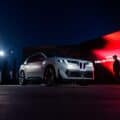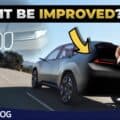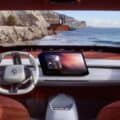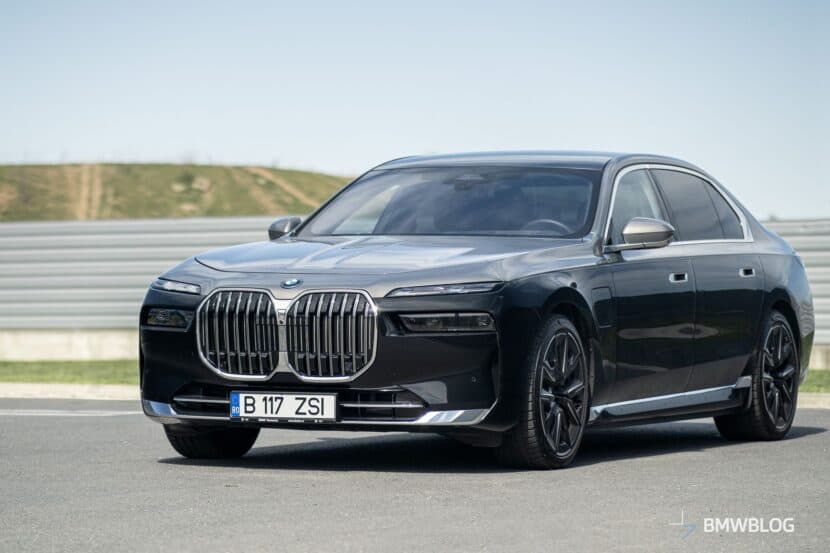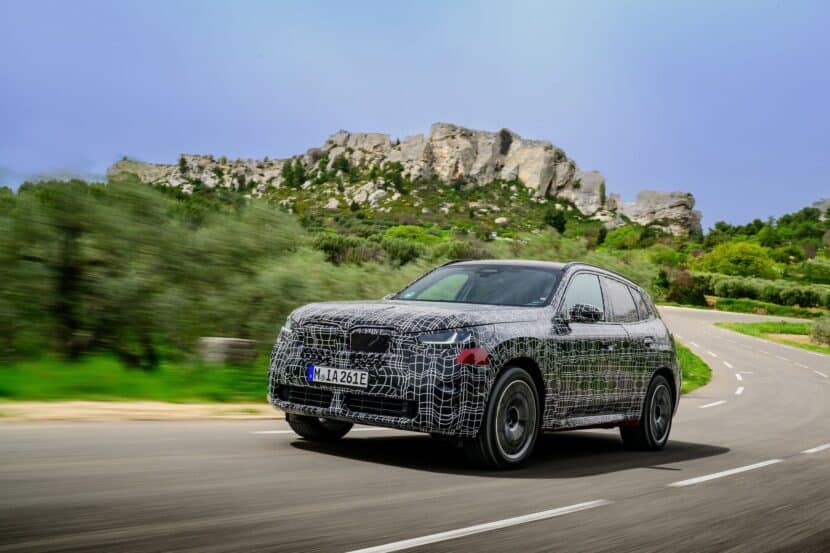Finally…………………………after several months of planning we are finally able to get the 2002 Turbo and the 1M onto the Zwartkops racetrack. I know what you are thinking: why the hell are we comparing the Turbo to the 1M and not the M235i? Well technically the 1M is the previous 2M if you catch my drift, secondly we wanted to get the range-topper which is the outright M car (M235i is just but the antecedent) to go head-to-head with the ultimate 2002 of its time, the Turbo.
But before we get into the driver’s seat let’s dive into the archive to find out what made these cars such trailblazers; admittedly the Turbo has got somewhat of a longer history.
As with the E30 M3, the 2002 Turbo was partly developed for homologation purposes so that BMW could go racing and secondly, as a halo car to boast sales of the 2002 range as it reached the end of the production-line. Although not badged as an M2 the development of the Turbo is firmly rooted in motorsport history.
In order to remain competitive, retain the title and flight off Porsche and the like in the 1969 Group 5 European Touring Car Championship, the head of motor racing at BMW, von Falkenhausen ‘Lord of the Blue and White’ developed the 2002TIK (K for Kompressor) with his small team of race engineers which included Paul Rosche, his protégée. The Turbo used the same M10 engine with the Kugelfischer manual injection system (which would be later introduced on the 2002tii). It produced up to 290hp and could reach speeds of 155mph. This was enough for BMW to secure a consecutive constructors’ title in ETCC in division 3 beating Porsche by half a point. Fourteen years later BMW would secure its first F1 title as an engine supplier and partner to the Brabham team which used the same M10 engine block, albeit with a much more powerful turbo.
Hot on the success of the 2002TIK, BMW wanted to demonstrate what they could do with turbo power in a road car and show off some of the other technological advances they were making and hence the 1972 BMW Turbo was born. Since I can remember I’ve had a nearly all-consuming undying passion for BMW cars and no car has captivated me more that the Paul Bracq BMW Turbo. It is the one car that I absolutely wanted BMW to build and still do. Even today it does not look dated and could definitely take on fellow German rivals, at least in the looks department.
Launched at the 1972 Paris Motor Show, the Turbo caused quite a stir with its impressive wedge-shaped design and gullwing doors. It had a mid-mounted 2-litre M10 turbocharged engine said to develop up to 280hp mounted on a modified 2002 chassis. Both prototypes were built by Michelotti and the Turbo was awarded “Concept Car of the Year” by the Revue Automobile Suisse in 1972. The Turbo was definitely ahead of its time with a collapsible steering column, ABS anti-lock braking system and a radar-based brake distance warning system.
Other safety features included side impact beams, an integrated roll-cage and deformable front and rear bumpers. The drive focus cockpit which became a ubiquitous feature on BMWs going forward was deemed futuristic at the time. The Turbo unfortunately never made it to the production-line but did give inspiration to the M1 and influenced certain design cues on the Z1 and 8 Series.
In my opinion the 1972 Turbo is the closest BMW has come to building a Supercar, definitely in the looks department. Compared to its closest rivals the M1 is the last halo car to come from the Bavarian stable, the i8 is a technological tour de force but I am not sure if it qualifies as a halo car for such a prestigious marque.
The 2002 Turbo was initially shown at the Frankfurt Motor Show in 1973, based on the success of the 2002TIK in the ETCC. By developing a road-going version of the 2002TIK, BMW could homologate the turbocharged engine enabling it to compete in the 2.0-litre class in the ETCC. It would also give BMW a distinct advantage over competitors by launching the first production road-going turbocharged car outside of the United States. General Motors in fact launched the first two turbocharged production cars in 1962 with the Oldsmobile Jetfire and the Chevrolet Corvair Monza; the Monza also managed to beat Porsche to the punch by producing the first rear-engine turbocharged car.
The Turbo was the ‘Bad-Boy-Racer’ of the ‘70s overtly wearing its ‘War-Paint’, comprising of deep front shovel spoiler, flared arches, boot spoiler and tri-colour stripes on the front spoiler and running down the sides. Pre-production models had 2002 and Turbo in reverse script on the front spoiler, making it clear to drivers in front to get out of the way. Shortly after the launch the world was hit by the “Oil Crisis” brought on by the Yom Kippur war in the Middle East.
The press responded rather negatively deeming that the Turbo was too aggressive and irresponsible in a time of motoring austerity. If that was not enough a massive safety and speed campaign was underway, driven by an influential lobby group (the Greenies of the day) which garnered substantial support from the German government. Who would have thought that the Germans with their Autobahns would shy away from speed? The Turbo was politically incorrect for its time; production was therefore short-lived with only 1,672 cars including 12 pre-production mules built from July to December 1973. Formal production started in January 1974 and ended in July 1975. Officially the Turbo was only produced in two colours of which 1,049 were in Chamonix white and 615 in Polaris silver. However, eight exceptions were made.
The Turbo was largely based on the 2002tii and by the time it was being developed von Falkenhausen and his team had officially become the Motorsport division within BMW and were responsible for bringing the car to market. The most significant difference between the tii and the Turbo was the substantial increase in power of 40hp. The Turbo used a somewhat fettled M10 1,990cc engine with a lower compression ratio of 6.9:1, Kugelfischer mechanical fuel injection (Schafer PL 04) and KKK (Kuhnle, Kopp and Kausch) turbocharger.
Turbo technology in road cars was really in its infancy; this initial attempt by BMW came without an intercooler. To compensate for the additional heat generated, an oil cooler and bigger radiator was fitted. The biggest drawback with this pioneering technology was the massive turbo lag partially brought on by the distance between the turbo and the inlet manifold. Nothing really happened until 4000rpm and by 6500rpm the fireworks were over.
The Turbo was however good for 130mph on the top-end and reached 62mph in just 6.9 seconds, remarkable for the day providing you were going in a straight-line with plenty of road ahead. It achieved this through a maximum power output of 170hp at 5800rpm and a torque figure of 177lb ft at 4000rpm. The gush of power at 4000rpm when the KKK blower kicked in was not for the faint-hearted, almost uncontrollable in the wet, tricky through tight bends and a bit of a nightmare in traffic.
The brakes were uprated – 10.8 inch ventilated disc brakes with four-piston callipers at the front (from the 3.0 CS Coupe) and 9.8 inch Simplex drum brakes at the rear. The suspension was tweaked comprising of MacPherson struts in the front and semi-trailing arms in the back. Standard 2002 springs were used in the front with a 20mm anti-roll bar, the rear was fitted with springs uniquely developed for the Turbo with three different ride height settings and a 16mm rear anti-roll bar.
The floor plan above the rear axle was strengthened. Boge dampers rounded off the package. The running-gear came standard with a 4-Speed strengthened Getrag gearbox with a 40 percent limited slip-diff. The five-speed dog-leg was an option but was the same used in other ‘02s.
The inside was pretty much standard 2002 fair except for a reddish instrument surround with a speedometer indicating a top speed of 240km/h (150mph), a centre cowling housing the VDO boost gauge and clock. Vinyl Rentrop Hubbert and Wagner (who owned one third of Recaro at the time) Sports seats with perforated center sections, three spoke sports steering covered in leather, very similar to that found in the M1.
BMW unveiled the 1 Series tii Concept at the 2007 Tokyo Motor Show making its intentions clear that it would build a leaner, meaner, more hardcore version of the already powerful E82 135i. The tii moniker harked back to one of the company’s most successful model, the 2002, known for its performance and agility.
It is alleged that the formal design concept and engineering of the 1M took place in only two weeks. While the head of the M division, Dr. Kay Segler was away, M staffers put together in secret the 1M from parts that were readily available from the parts bin which included the twin-turbo 3.0-litre straight-six engine from the Z4 sDrive and 335i, as well as suspension and brakes from the E92 M3. On his return Dr. Segler was presented with a near road-going prototype which he got the BMW board to green-light.
Segler explained prior to the final unveiling in December 2010 that the 1M was a more driver-focused car and deemed a spiritual successor to the E30 M3, emulating the driving experience of the E30 M3 as closely as possible within the parameters of safety and emissions regulations. This would be the smallest most affordable M model of its time, aimed at reaching a wider, younger audience. Under Segler’s insistence the Valencia orange became an official colour for the 1M and the “Poster Boy” color.
The recipe for creating this M car was slightly different. Instead of building an engine from the ground up it used an existing engine, BMW’s award-winning twin-turbo inline-six engine (N54B30T0) which received unique engine software for the 1M. Most significantly this engine came with a twin-turbo, making the 1M the first full-on M car after the Turbo to use forced induction. The headline figures stuck up as follows: maximum power output of 340hp reached at 5,900rpm and maximum torque of 332lb ft reached from as low as 1,500rpm. The redline is reached at 7,000rpm but the 1M has an ace up its sleeve, an overboost function that briefly increases torque by another 37lb ft, rounding up the torque figure to 369lb, giving the car a substantial increase in acceleration. The 1M will complete the 62mph sprint in 4.9 seconds with a top speed that is limited electronically to 155mph.
The suspension geometry is virtually lifted from the E92 M3, the M3 parts bin was further raided to provide the 1M with brakes, M Variable Differential and those signature Y-Spoke 19-inch alloy wheels first seen on the M3 CSL. The 1M was only offered with a six-speed close-ratio manual ‘box with a unique oil cooling system.
In order to accommodate the wider suspension and wheels from the M3 the front fenders and rear quarter was significantly widened giving rise to that caricature look that is straight out of a Marvel comic book. I could definitely see Batman’s sidekick Robin behind the wheel of a stealth black 1M. The exterior is rounded off with the signature M quad pipes and the aerodynamically shaped door mirrors again borrowed from the M3. The 1M’s “War-Paint” definitely screams “Boy Racer”. Wonder what the ‘70s Greenies that all but banned the Turbo would make of it?
The cockpit is fitted with leather M Sport seats, chunky M3 leather steering wheel, and smatterings of Alcantara trim – on the instrument binnacle, centre inlay across the dash, gearshift cover, handbrake on the doors and rear passenger side panel all with contrasting orange stitching, the cabin is rounded off with an Anthracite headliner. The M1 is also equipped with the now famous M Drive button on the steering which activates a quicker throttle response, firms the suspension and sharpens the steering.
BMW only intended to sell a limited number of 2,700 1Ms but as with the E30 M3 demand exceeded supply and approximately 6,340 vehicles left the production-line in three specific colours, Valencia orange, Sapphire black and Alpine white. Surprisingly the Alpine white out-sold the Valencia orange by seventy units, who would have thought?
Now that we have a sense of what we are dealing with let’s have a closer look at these two fine examples. First up is the 2002 Turbo and just look at it…..utter perfection, from the stance to the M tricolours perfectly reflected from the Chamonix white body. This was however not always the case as this car is one of the eight exceptions that were not finished in white or silver.
Nicky Oppenheimer ordered this car through Park Lane one of the BMW concessionaires at the time in the UK with specific instructions that it be Golf yellow and fitted with electric windows as well as an electric sunroof. Jack Kaplan being the BMW enthusiast and collector that he is, (see the March issue of BMW Car where his E30 M3 and E30 325iS Evolution is featured) saw it fifteen years ago with only 49,700 miles (80,000km) on the clock and just had to have it. Who can blame him, this is the only running example on the African continent.
However, according to Robert Gruenberger (who researched BMW’s records) of the 2002 Turbo Club in Germany four cars were shipped to Angola. Jack explains that by the time he got the car an extensive restoration had already been undertaken and that it had been converted to Chamonix white. But Jack being Jack decided to further enhance the Turbo. The first thing you will notice is the updated inlet manifold which was used on M10 motors fitted to E12s, E21s and early E30s.
The manifold, valve cover and intercooler have been finished with a black crackle effect – think Alpina and you get the picture. This is definitely one of the neatest engine bays I’ve seen, fitted throughout with Russell braided fuel lines, adaptors, hoses, hose ends and tube nuts. To ensure that all is tied down nicely, Raceware aerospace quality engine fasteners have been used. The KKK blower known for its enormous turbo lag and fish tailing effect has been replaced with a Turbonetics turbo with 0.62 bar (8.9psi) of boost.
To cope with the extra heat a purpose-built intercooler has been fitted. An Electromotive, direct ignition system has been fitted, the cylinder head gas-flowed and a custom-built Sports exhaust installed – the compression ratio upped to 7.2:1. The car still has the original gearbox and differential but has been fitted with more effective Bilstein dampers and a front custom-made strut-brace. Front brakes consist of 305mm ventilated cross-drilled Wilwood discs with matching Superlight 4-pod callipers, the rear has 255mm drums.
The rear bumper has been blacked out giving it that E9 CSL feel and the tailpipe protrudes from the centre of the rear valance – some Turbos have the tailpipe on the side. The fuel filler cap is that of a Superbike, how appropriate, and matches the rest of the bright-work quite nicely. Fittingly the Turbo sports a set of staggered BBS RS split rims 7Jx16 inch in the front and 8Jx16 inch at the rear running on Bridgestone RE71 rubber, 195/50/16 and 225/45/16, respectively.
The cabin has that glass-house feel (offset by the black roof-lining) that is so reminiscent of BMWs of this era. Step inside and you are treated to Rentrop Hubbert and Wagner Sports seats that have been recovered in leather by BMW SA with M tri-colour inserts. Inside you notice that Jack has once again added his own personal touch by installing the centre console from the E30 which houses the buttons for the electric windows, gauges for the new turbocharger and the gearshift from the 325iS. To steer you have a Momo Sports wheel and racing pedals to induce momentum and retardation.
Turn the key and the motor barks into life, the idle is erratic, definitely does not sound like a four-pod more like a tuned big block six-cylinder. The motor never settles into an even idle, only on pull away does the exhaust note smooth out and then builds into a crescendo as the accelerator is driven into the horizontal position. The Turbonetics turbo comes online with a whine that is faintly audible above the engine and exhaust note.
When it is completely on song it sounds very much like the electric motor found in a RC car. There is virtually no evidence of turbo lag and the power builds in quite a linear fashion, it is rather smooth and progressive largely due to the fact that the turbo can be finely tuned (from the controls also found in the centre console), coupled with the updated direct ignition system. Jack is eager to show what the Turbo is made of on this short 1.5 miles (2.4km) circuit made up of eight corners including a 180 degree hairpin.
The Turbo easily turns into the corners with very little need for braking, Jack instead snap changes the cogs up and down the ratios to manoeuvre through the bends. This chassis is very well sorted and I suspect that it might also have stiffer and shorter springs with high performance bushes where it counts. There is no power-steering but the weighting on higher speeds is spot on. I’ve been in the passenger seat before with Jack at the wheel, in his E30 M3. He is a very competent steer, he really pushes the Turbo but it does not behave like a forty-year-old car, it is rather compliant and extremely capable. Like most of Jack’s other cars the Turbo runs on 102 avgas jet-fuel and manages to push out 265hp at 6000rpm and musters 212lb ft of torque at 4200rpm with a top speed of 155mph. It is hard to believe then that in the fifteen years that Jack has had the Turbo he has only managed to put on an additional 8000 miles.
The 1M definitely looks the business with the carbon fiber aero kit which has recently been fitted by Ernest Smith’s BMW dealer, Vaalridge Auto. The kit comprises of a front splitter, rear diffuser and a thin lip spoiler that fits nicely onto the existing ducktail boot spoiler – the Alpine white accentuating the carbon fibre accents. Ernest is the second owner; he got the car in October 2013 with merely 10,190 miles (16,400km) on the clock. Lucky guy, this is one of approximately 80 that were brought to South Africa. Ernest gets behind the wheel, turns off all the safety nannies, engages the Dynamic and M buttons. Through the three fast corners Ernest is able to set the rear rubber alight and kick out the back end.
Once Ernest has had his kicks he hands me the key, the driving position is perfect and the Sports seats offers perfect support. The 1M pulls away smoothly and keeps on pulling until I hit the first corner, the steering although assisted, is well weighted and turn-in is sharp, the chassis is dynamic allowing for plenty of acceleration through the bends. The brakes feel sharp and the brake pedal allowing for just enough travel, it might just have one piston but it was enough to allow me to keep my nose clean while on the track. This is a short track and during my time on it I definitely did not experience any turbo lag, instead a rather linear power delivery. Going with the manual only option was definitely the right decision, the short-shift gearbox makes the car more drivable and is undeniably one of the biggest highlights for me – it also reminds me of my time behind the wheel of a South African icon, the E30 325iS.
The 1M is without a doubt going to be a future classic not only because it was produced in such limited numbers but because it is such fun both to look at and more so to drive. BMW threw caution to the wind and built a car in the spirit of the E30 M3, and did a phenomenal job having to comply with modern safety and emissions regulations. BMW will never be able to build another E30 M3 but the 1M is a true driver’s car for today’s generation of enthusiasts.
If I had to choose though, I would go with the Turbo; I am probably what you would call yesterday’s enthusiast. The erratic idle makes it sound completely untamed but in reality it is quite drivable with the boost being perfectly setup. I like the fact that it has been upgraded with more modern equipment but has kept enough originality to still be considered a classic. So you get the best of both worlds, or ‘classic-re-imagined’ which is the latest term that has been coined for this type of restoration; fifteen years ago there was no term but Jack did it anyway. Today companies such as Eagle are restoring E-Types to better than new, thanks to the modern components fitted, Singer does the same for early air-cooled 911s, and Mechatronik will virtually do any classic Mercedes.
The purist will obviously not agree with me and will probably burn Jack at the stake for the enhancements that he has brought about, but I salute him as this is a classic that you can virtually drive all day and have fun with on the track when the opportunity beckons.
Special thanks to: Ron Silke
Photography: Oliver Hirtenfelder
Originally featured in BMW Car Magazine: www.bmwcarmagazine.com







